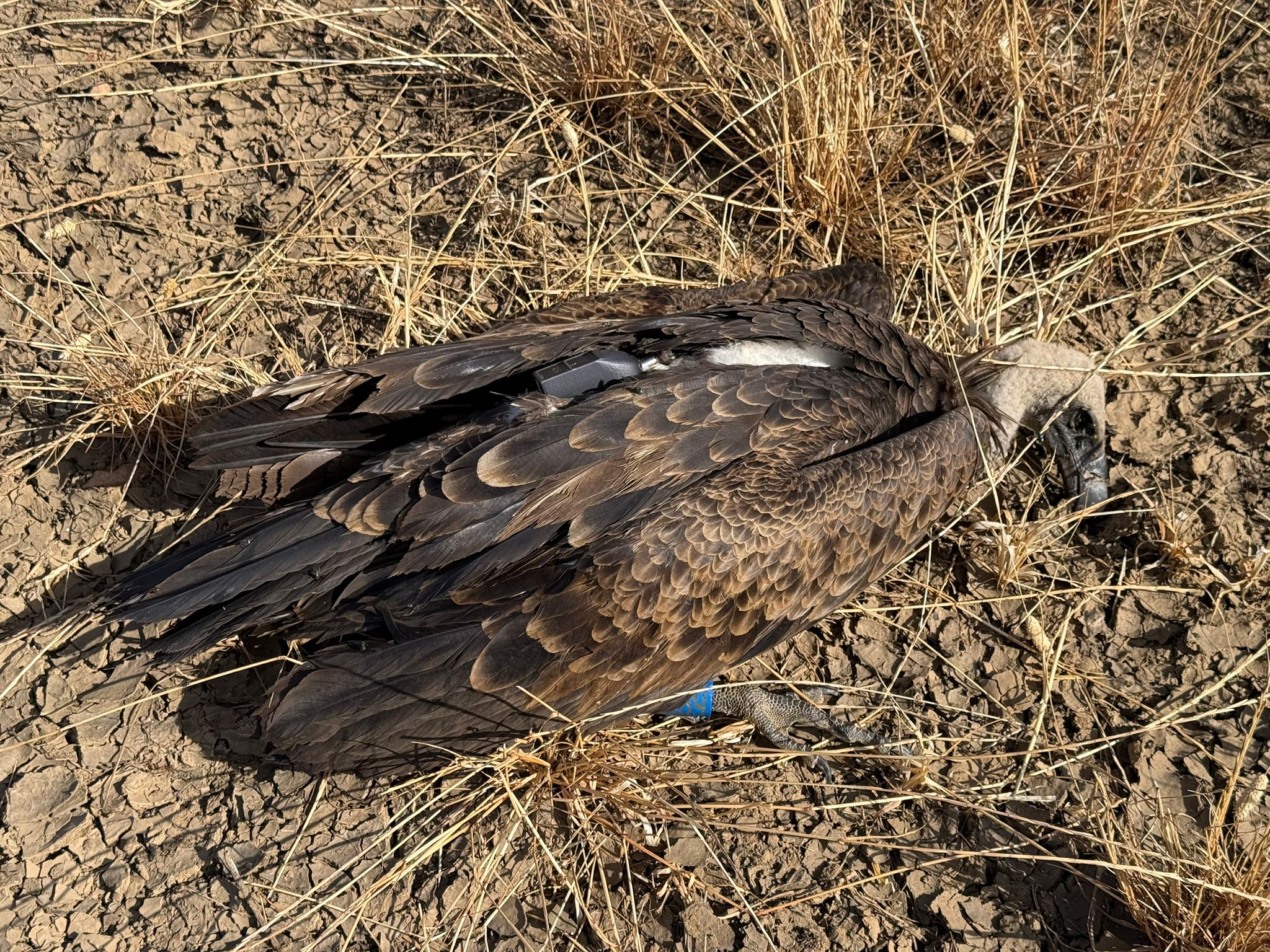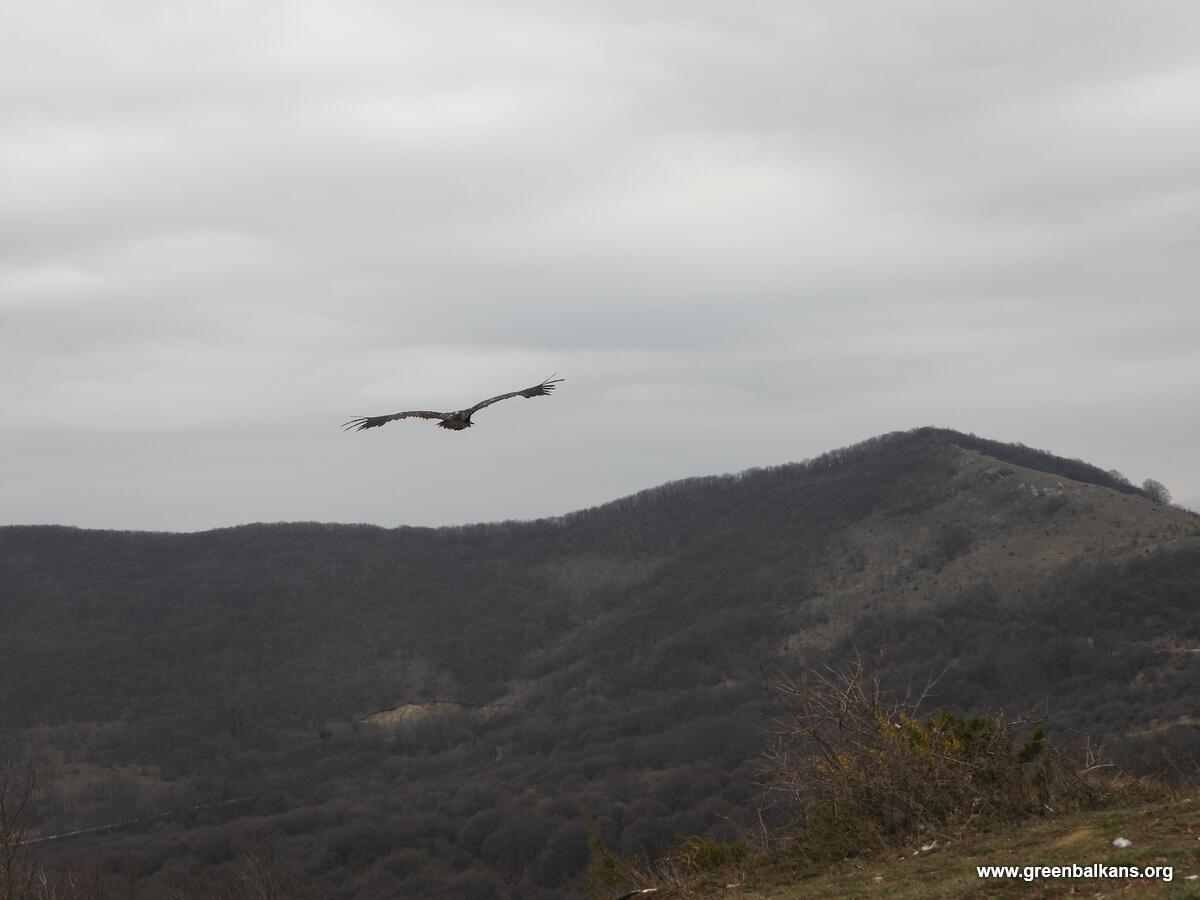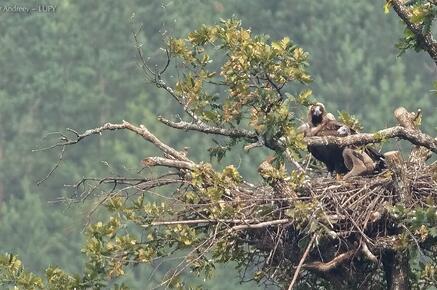With the first maintenance of Cinereous Vulture nests, the LIFE Aegypius Return team has already started implementing concrete conservation actions to boost the chances of successful breeding. In mid-January, the Portuguese NGO Liga para a Protecção da Natureza (LPN), in collaboration with Herdade da Contenda, conducted the first rebuilding and repairing of Cinereous Vulture nests on the Contenda estate within the scope of the newly launched project.
Rebuilding and repairing Cinereous Vulture nests



Reconstruction of Cinereous Vulture nests at Herdade da Contenda © LPN
Last week, a team of two technicians with experience building artificial nests rebuilt three natural Cinereous Vulture nests at Herdade da Contenda in Alentejo (Portugal), which had fallen down in 2022. They also repaired two other nests in the area that needed maintenance in order to be used by the species again. What led to the collapse of the now-rebuilt nests was the breakage of tree branches that previously supported them, as well as bad weather. The technicians had to build an artificial structure reinforced with metal bars to recreate the natural nesting structures. In all these nests, technicians also placed plant material (small branches, sticks, etc.) to mimic natural conditions and make these structures attractive to the species again. To install these five nests, they had to carefully climb to the top of large pine trees, usually selected by Cinereous Vultures to nest in the region. The intervention lasted three days.

Promising results already produced
The effort now made at Herdade da Contenda has already started to produce results! Only three days after its reconstruction, it was already possible to observe a pair of Cinereous Vultures perched on one of these nests. A strong nest structure is crucial since when that same nest collapsed at the end of last spring, the small chick at the nest fell and died. Now, Cinereous Vulture pairs will be able to breed there again, enjoying a reinforced nesting structure, which will hopefully help increase the chances of successful reproduction this time.
Herdade da Contenda is a very important place for the species as it is home to the second largest Cinereous Vulture breeding nucleus in Portugal, with ten breeding pairs. However, in 2022, only three pairs successfully reproduced (raising, as usual in the species, one chick each), partly due to the collapse of natural nests during the breeding season.

Monitoring the breeding season
With the Cinereous Vulture breeding season starting, the partners will begin monitoring the nesting of the species in the coming weeks in Herdade da Contenda and other regions of intervention of the LIFE Aegypius Return project along the Portuguese and Spanish border. This work will allow us to monitor and evaluate the reproductive success of the species and the impact of the conservation measures planned in the project.
The photos presented in this post were taken from a safe distance using a telescope for monitoring and conservation purposes. It is crucial not to approach nests for photography, birdwatching or other similar activities during the breeding season since this is a very sensitive period and any disturbance to the nesting pairs may result in breeding failure.
About the Cinereous Vulture

La Cinereous Vulture (Aegypius monachus) is an impressive bird with a wingspan of almost 3 meters. As a scavenger, it plays a vital role in nature by feeding on carcasses, helping keep ecosystems functioning and potentially minimising the spread of diseases.
Individuals take quite a long time to reach sexual maturity (4 to 5 years), and each breeding female lays only one egg per year. The reproductive process is also quite lengthy: from the construction or arrangement of the nest to the independence of the chicks, it takes about nine months. Cinereous Vultures provide excellent parental care for their offspring, and the pair shares various responsibilities, such as incubation, nest guarding and provision of food.
O projeto LIFE Aegypius Return
The LIFE Aegypius Return project aims to consolidate and accelerate the return of the Cinereous Vulture in Portugal and western Spain by improving its habitat and foraging conditions, minimising threats and developing national capacities. The project team will implement targeted conservation actions across ten Natura 2000 sites, along almost the entire Spanish-Portuguese border, to double the Cinereous Vulture breeding population in Portugal to at least 80 pairs in 5 colonies and downgrade the national status of the species from Critically Endangered to Endangered by 2027.
LIFE Aegypius Return está cofinanciado por el Programa LIFE de la UE Programa LIFE y cuenta con un presupuesto de 3,7 millones de euros. Su éxito depende de la participación de todas las partes interesadas relevantes y de la estrecha colaboración del principal socio del proyecto, la Vulture Conservation Foundation (VCF), con todos los socios locales: Palombar – Conservação da Natureza e do Património Rural, Herdade da Contenda, Sociedade Portuguesa para o Estudo das Aves, Liga para a Proteção da Natureza, Associação Transumância e Natureza, Fundación Naturaleza y Hombre, Guarda Nacional Republicana y Associação Nacional de Proprietários Rurais y Associação Nacional de Proprietários Rurais Gestão Cinegética e Biodiversidade.




